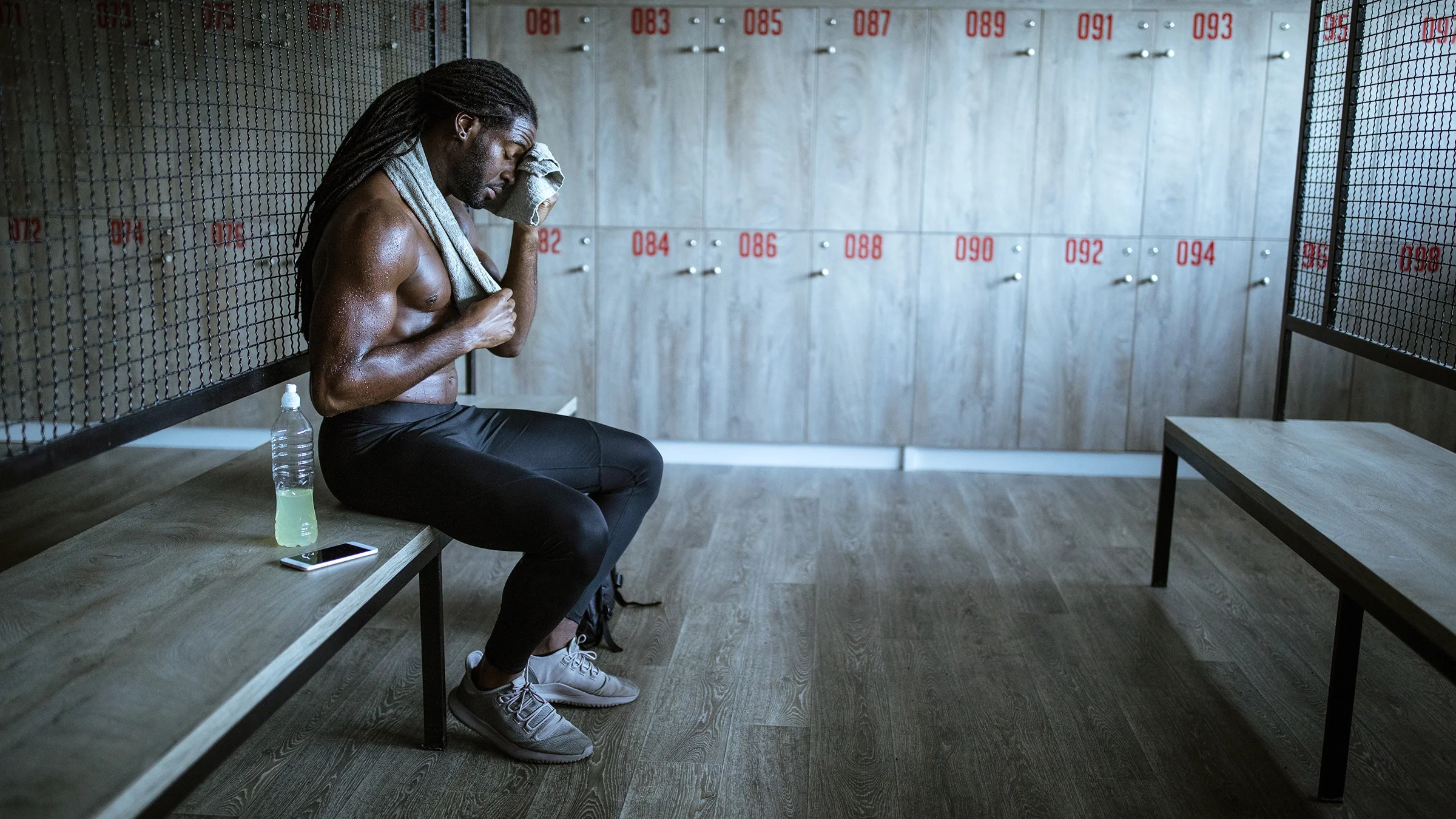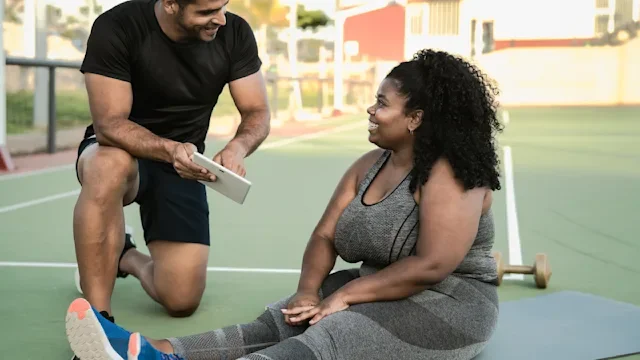Key takeaways:
There’s limited research on the benefits of hot or cold showers for exercise recovery.
Heat therapy may promote circulation and muscle relaxation. Cold therapy, meanwhile, may reduce inflammation and muscle soreness.
Deciding to take a hot or cold shower after a workout depends on your preference and recovery needs.
For some people, taking a shower after a workout doesn't just wash away the sweat. They believe it also jumpstarts exercise recovery. But does it work? Should you hop in a hot or cold shower after a workout?
Research on hot and cold showers for exercise recovery is limited. And opinions on the best strategies vary widely. Let's take a look at the benefits of each to help you decide.
Is it better to take a hot or cold shower after a workout?
There’s minimal evidence that taking a hot or cold shower after a workout promotes recovery. So the answer depends on your needs and preference.
Search and compare options
Most research on heat and cold therapy after exercise doesn't focus on showers. Studies often include other methods, such as:
Warm baths, hot tubs, pools, or ice baths
Local therapy, including heat or ice packs
Much of what people believe about hot and cold showers for exercise recovery is opinion based on research into other heat and cold therapy methods. But that doesn't mean you can't take a hot or cold shower as part of your post-workout routine.
Although the evidence is mixed, many studies suggest that cold, especially cold-water immersion, is better than heat for exercise recovery. Many experts, including the American College of Sports Medicine, recommend cold instead of heat therapy to aid muscle recovery. That might give cold showers the edge after exercise. But again, there’s a lack of scientific evidence to support either option.
It's best to experiment and see which you prefer. Many people find hot showers relaxing and cold showers invigorating. A hot shower after a moderate- or low-intensity evening workout might help you unwind before bed. A cold shower after a vigorous morning workout can energize you for the day.
What are the benefits of a hot shower post-workout?
Taking a hot or cold shower after exercise isn’t a proven recovery method. But the proven benefits of heat therapy could make a hot shower a worthy addition to your post-workout routine.
There are many ways to soothe sore muscles after exercise. Try proven strategies for post-workout pain relief.
Rest is critical for workout recovery. Find out how many rest days you should take each week.
Proper nutrition can help too. Consider adding these foods to your diet to boost muscle recovery after exercise.
Increases circulation
Local or whole-body heat therapy, such as heating pads or hot-water immersion, may dilate blood vessels and increase blood flow.
Eases joint and muscle pain and tension
Increased circulation delivers nutrient-rich blood to your muscles. Heat therapy –– such as hot compresses or baths –– can relieve sore muscles and stiff joints. It's been shown to ease post-workout soreness and back pain.
Local heat therapy also increases muscle temperature. This can make your muscle tissue more pliable and ready to work before exercise. More flexibility and range of motion could lead to better performance during exercise and less tension afterward.
Read more like this
Explore these related articles, suggested for readers like you.
Helps you relax
For many people, a hot shower is a good way to physically and mentally relax. It can soothe your muscles and help you unwind after a long day.
According to a clinical review, taking a warm bath or shower 90 minutes before bed may make it easier to fall asleep and improve sleep quality. So a hot shower might be the way to go after evening workouts.
What are the benefits of a cold shower after a workout?
Many discussions about cold therapy and exercise recovery focus on ice baths. But a cold shower might also be helpful if you're not ready to take the plunge. Here are some key benefits of cold therapy.
Reduces inflammation
Methods such as cold-water immersion can narrow blood vessels to reduce blood flow. This may reduce inflammation and swelling after a workout.
Eases delayed-onset muscle soreness (DOMS)
DOMS after a new or high-intensity workout causes muscle aches and pains. Studies suggest that cold water may reduce DOMS and promote recovery. One theory is that increased blood flow after exposure to cold water helps bring oxygen-rich blood to your muscles. (Cold therapy temporarily reduces blood flow, but circulation increases again after exposure.) That might explain why many experts recommend cold therapy techniques for exercise recovery.
Cools you down
This one might seem obvious. But getting in a cold bath or shower can help cool your body after a vigorous workout, especially if you exercise outside in the heat or in a stuffy gym.
May improve mood and energy
A cold shower might help you feel more energized. Research suggests that cold water immersion may improve mood and increase alertness. So a cold shower might be the way to go if you want to feel energized after morning workouts.
What about contrast temperature therapy after exercise?
You may reap the benefits of hot and cold showers after exercise with contrast temperature therapy. This practice, also called contrast water therapy, involves switching between hot and cold water several times. Contrast baths may boost circulation, reduce muscle pain, and promote relaxation after exercise.
But some researchers note that it's no more effective than methods such as stretching and active recovery, which involves low-intensity exercise –– like walking or swimming –– after higher-intensity workouts.
What are the best ways to recover after exercise?
Ultimately, the decision to take a hot or cold shower after exercise comes down to preference. But neither option should replace recommended recovery strategies, such as:
Post-workout cooldowns
Rest and active recovery days
Proper nutrition and hydration
Getting enough sleep every night
You can add to these key practices by trying other options such as massage therapy and foam rolling.
The bottom line
There's no debating that a post-workout shower cleanses your body. But can a hot or cold shower after a workout also jumpstart your recovery? The research on showering after exercise is limited, so it's hard to say.
Heat therapy may increase circulation, promote relaxation, and ease muscle tension. Cold therapy may reduce inflammation, relieve muscle soreness, and boost mood. Try hot and cold showers after your next sweat session to decide what works for you.

Why trust our experts?



References
Alencar, M., et al. (2019). A road map to effective muscle recovery. American College of Sports Medicine.
An, J., et al. (2019). The thermal effects of water immersion on health outcomes: An integrative review. International Journal of Environmental Research and Public Health.
Bieuzen, F., et al. (2013). Contrast water therapy and exercise induced muscle damage: A systematic review and meta-analysis. PLoS One.
Bleakley, C., et al. (2012). Cold‐water immersion (cryotherapy) for preventing and treating muscle soreness after exercise. Cochrane Database of Systematic Reviews.
Bouzigon, R., et al. (2021). Cryostimulation for post-exercise recovery in athletes: A consensus and position paper. Frontiers in Sports and Active Living.
Campa, F., et al. (2019). Stabilizing bioimpedance-vector-analysis measures with a 10-minute cold shower after running exercise to enable assessment of body hydration. International Journal of Sports Physiology and Performance.
Dalleck, L. C. (n.d.). The science of post-exercise recovery. American Council on Exercise.
Freiwald, J., et al. (2021). A role for superficial heat therapy in the management of non-specific, mild-to-moderate low back pain in current clinical practice: A narrative review. Life.
Haghayegh, S., et al. (2019). Before-bedtime passive body heating by warm shower or bath to improve sleep: A systematic review and meta-analysis. Sleep Medicine Reviews.
Hohenauer, E., et al. (2019). Partial‐body cryotherapy (−135°C) and cold‐water immersion (10°C) after muscle damage in females. Scandinavian Journal of Medicine & Science in Sports.
Kerksick, C. M., et al. (2018). ISSN exercise & sports nutrition review update: Research & recommendations. Journal of the International Society of Sports Nutrition.
Kim, K., et al. (2020). Local heat therapy to accelerate recovery after exercise-induced muscle damage. Exercise and Sport Sciences Reviews.
Sayre, C. (n.d.). Heat therapy helps relax stiff joints. Arthritis Foundation.
Versey, N. G., et al. (2013). Water immersion recovery for athletes: Effect on exercise performance and practical recommendations. Sports Medicine.
Yankouskaya, A., et al. (2023). Short-term head-out whole-body cold-water immersion facilitates positive affect and increases interaction between large-scale brain networks. Biology.
Yeung, S. S., et al. (2016). Effects of cold water immersion on muscle oxygenation during repeated bouts of fatiguing exercise. Medicine.


















